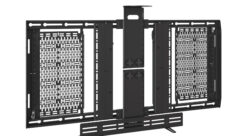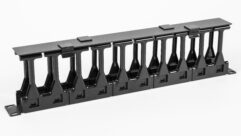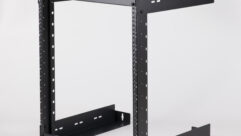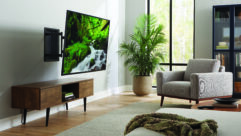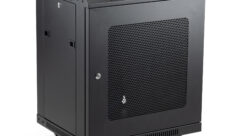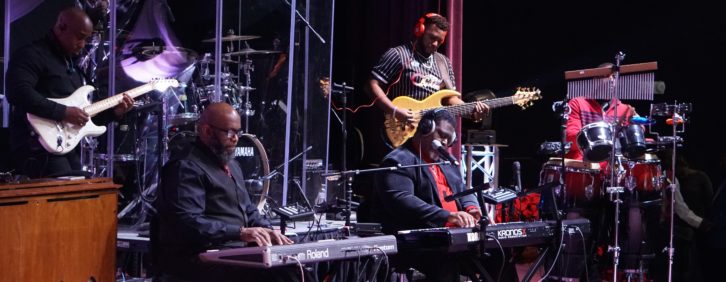

Click to listen to the PODCAST
The Mount Hebron Church in Mobile, Alabama is a very busy place. They needed all new sound, video and lighting with not much time to get it done. They called in local AV contractor Vision Integration for the work and now they’ve got a whole new look and sound. Gary Baria is here this week to give us the lowdown on the project.
SVC: We’re going to be talking about a very big church AV upgrade project, but before the details on that, tell us about Vision Integration and what all goes on there.
Gary Baria: My business partner, Scott Daniel, and I started a little over eight years ago. We had worked in the industry. I’ve been in for like 25 years, Scott for about 15. And we saw a need to get out there and get a better-quality product and better installs into the area and things worked out to where we were able to do that. We are a design, build, install firm. We have two Crestron master DM programmers here. All of us are capable on any DSP. We do house of worship, of course we do classrooms and higher education – just everything to do in the industry.
I guess in a town the size of Mobile word gets around and it’s probably word of mouth that’s important to promoting your business.
Actually, it is. We’re always looking for great referrals, and we go out of our way to help our clients any way we can. This industry, especially in house of worship, it’s all ran by volunteers. So a lot of times we have to spend a little extra time, extra training just taking care of our clients. We’re slowing spreading and I think we’ve got a real good thing going on here. We’re all really enjoying it and working diligently and working extremely hard.
In this case, it was a local job. The Mt. Hebron Church seems like it’s got the same situation as a lot of others in that it’s out growing its sound system and even its facility. Are they more a traditional or contemporary church with a lot of live music and performances?
Yeah, they’re contemporary. The sanctuary now seats just a little over 900. They have an eight-to-nine piece band every Sunday. They rotate between having a choir, which is around 40 to 50 in their choir, and then when they have their praise team there are nine members of their praise team, including the worship pastor.
Okay, so a lot going on onstage. This upgrade you did for them was not just a sound system. I think you did considerably more than that.
Yes. We upgraded the audio, of course. We also upgraded the video and projectors, screens, switchers. We added some hand-held cameras, some PTZ cameras. Also we did a really cool thing in the baptistery. They had to seal up most of the baptistery wall except for a small window. So we ended up putting a lipstick camera in the baptistery and lighting and a microphone to capture everything in the baptistery. And that’s all sent back to the video and audio systems.
If they’ve got three services going every Sunday that’s almost a week’s work right there in one day.
Also, they do their traditional Wednesday services too. There is a childcare center built into the sanctuary so the children also come into the main sanctuary and do videos. They do skits and do a lot of things in there. So it’s very multipurpose.
To update the sound you gave them a Martin Audio system. What was the problem with the old sound system that required a complete redo?
Well, their original sound system, which is what we replaced, was an exploding cluster with 12 boxes. The exploding cluster was causing a lot of phasing issues and the intelligibility was just not there. So we were discussing line arrays with the church as an alternative and we went with the Martins to give us what we needed in the sanctuary.

What was the extent of that work? Did it include any electrical or structural changes like new rigging?
We had to do some rigging, but the structure was there to do it so it wasn’t that much that had to be done, which helped out with the install. And of course the electrical was already in place except for a little bit of changing in the circuitry to provide for the lighting with the huge lighting update that we did.
Let’s see, that was a Martin Audio Wavefront Precision Mini system wasn’t it?
Yeah, the WPM system with the SX218 subs. Of course we used the K42 and K81 amplifiers along with the LE200 stage wedges. And then we used the small sixes for front fills and side fills.
Yeah, the CDD6. Those are passive two-way, really compact units with a lot of punch right there in the immediate area.
Yeah. When we did the install there were issues with the hang because of the structure. We couldn’t get the speakers exactly where we wanted them, so we had to add the fills in but it actually filled up the areas perfectly. And it was funny because we were doing a demo with the pastor one day and we had just the front fills and the subs on, and the pastor walked in and asked us, “The main array sounds great. Can you turn the front fills on?” And we were like, ‘pastor that is the front fills.’
It’s a passive system so where did you locate the amplifiers?
In the original install, of course all the conduit and everything was in place. The amp room is right off the stage, so we just had to pull in new wiring to the speakers, of course. The electrical, like I said, was already in place so that was a cost that the church didn’t have to incur, of course, which kept them within their budget and made everything a lot easier for us also.
And those CDD6 fills that you put in probably make things a lot better on gain before feedback with all those live mics onstage.
Yeah. It’s so funny because there’s very little audio coming off the backside of the line arrays, so with all the microphones that are on stage, and of course with the band all being on in-ears, it keeps the stage level extremely low which helps out all the guys at front of house keeping the intelligibility and the clarity throughout the system.
In addition to the in-ear monitoring I think you’ve also got some Martin LE200 stage wedges up there, too.
Yes, that’s correct. So we’re using the stage wedges basically for the keyboard. The choir loves to hear the piano, so that’s what we’re using those for. And of course with guest speakers or anything else, we have four mixes on stage so we can scatter the wedges around wherever we need them.
On the mixer end of things you used the Allen & Heath dLive consoles. What was the particular attraction of those? Was it cost or just easier for fledgling tech people to operate those?
It’s kind of a unique situation there because the church has a separate room upstairs for their broadcast. We’re doing broadcast audio so we’re using the dLive as the main desk, of course, and then we’re breaking that out so all the inputs from the stage boxes are going to both consoles downstairs and upstairs to broadcast. So with the Allen & Heath having the ACE cards, we’re transferring all the information, all the audio, through the ACE to each desk and their both, of course, getting the same inputs. Then the guys upstairs are mixing broadcast and video audio from that desk upstairs, and then the main audio is being fed from the dLive downstairs. And with the cost of the dLive and the Allen & Heath in general working all together through the ACE cards, it’s just everything that we look for to give the church a good product at a good cost.
So it’s a contemporary church with a lot of performers with wireless mics plus a choir. I’m sure it can be fun mixing a choir with a lot of vocalists on solo mics. What sort of an RF mic situation do you have there?
We went with the ULXD Shures. Most everyone has SM58s with those except for a few Beta 87As that we have on certain performers because of their voices. But we, of course, did our due diligence on frequencies when we were looking at the area; came up and split the frequencies up between the J50s and the Gs. And the ULXD 4Q is just a great, great receiver. We’ve had nothing but excellent performances out of it. And, of course, we use these all networked together and there is a computer out front where we run the Shure software. We can change frequencies or the guys can look at the wireless going on during the service and if they see any issues popping up, they can take care of it right then and there.
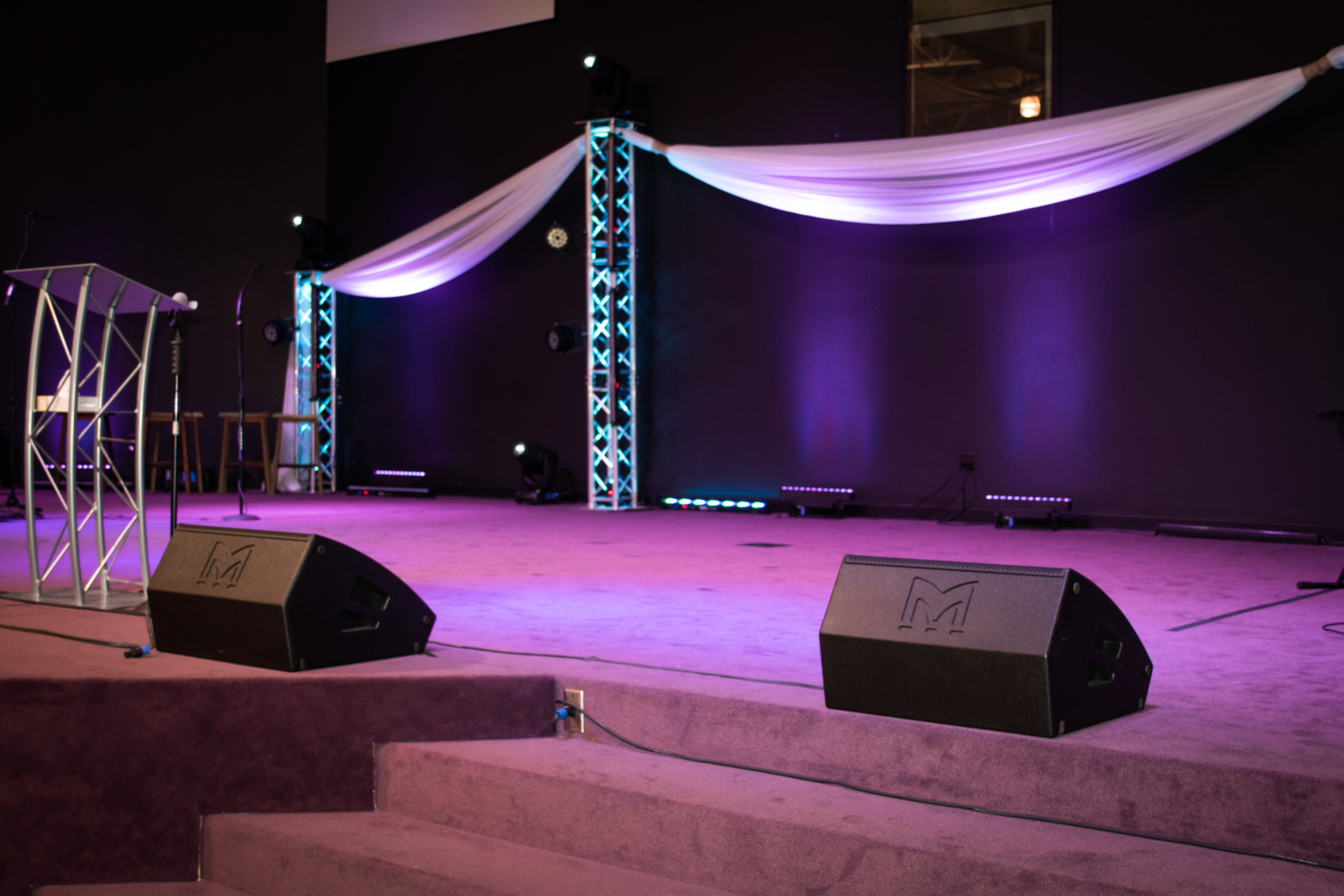
Okay, and that’s Wireless Workbench you’re talking about on the software?
Yeah, the Wireless Workbench with Shure. Yeah.
I guess those Shure mics with SM58 heads on them are tough enough they can survive being dropped and bumped into things and just keep right on going.
Yeah, and like I said there was times when the children come in and, of course, children and microphones do not mix. But so far, luckily, we’ve had no issues with these microphones, and they’re tough as nails and that’s why we installed them.
The church does have streaming for the services so how is the video system set up?
We’re using the Roland XS84H, it’s an eight by four multi-format AV matrix switcher. We’re also using the PTZ Optics cameras and the Panasonic handheld cameras. We’re using Creston Digital Media to do some of the video switching for us too. The church has three screens with three Panasonic 7,200-lumen projectors, the RZ770s.
With three screens it might have been a little bit of a trick to keep the glare off of the projection areas.
It was a little bit of a challenge, but of course the back wall of the sanctuary is extremely tall so we were able to get the screens up high to still give them a nice viewing area and not everyone having to crane their neck up to see the screens.
And what do you do on the video production? Is there IMAG involved on the services with camera operators having to hold close-ups with mobile people onstage?
They’re not using IMAG yet. That’s something we we’ve been discussing with them, but there are three handheld Panasonics, the AGUX180s. Two of them are stationery on tripods, so then we have one roaming on-stage camera. And what’s unique about the situation is with the matrix switcher from Roland we were able to put any image on any screen at any time. The church already had recording in place so all we had to do was just give them a video feed into their streaming and everything worked out seamlessly.
When you’ve got all of those people on the tech side trying to stay coordinated how do they communicate during the services?
Luckily there was a two-channel ClearCom already in place, so we’ve got the audio crew on one side and the video guys on the other. Also, we utilized an old Aiphone system that was still there. If they want to go station-to-station without interrupting anyone else on the ClearCom, then they can go back and use the old Aiphone.
What kind of lighting system was installed in the tech systems upgrade?
We ended up going with the Blizzard. So we have the Blizzard Kryo.Morphs, the G-Max, the Colorise Quadras, the zoomable PARs. We ended up putting truss in and it’s all being controlled with a Hog Hoglet 4.
And where do you have the lighting control? Is that right there at front-of-house or someplace else?
The lighting and front-of-house are all in the same location.
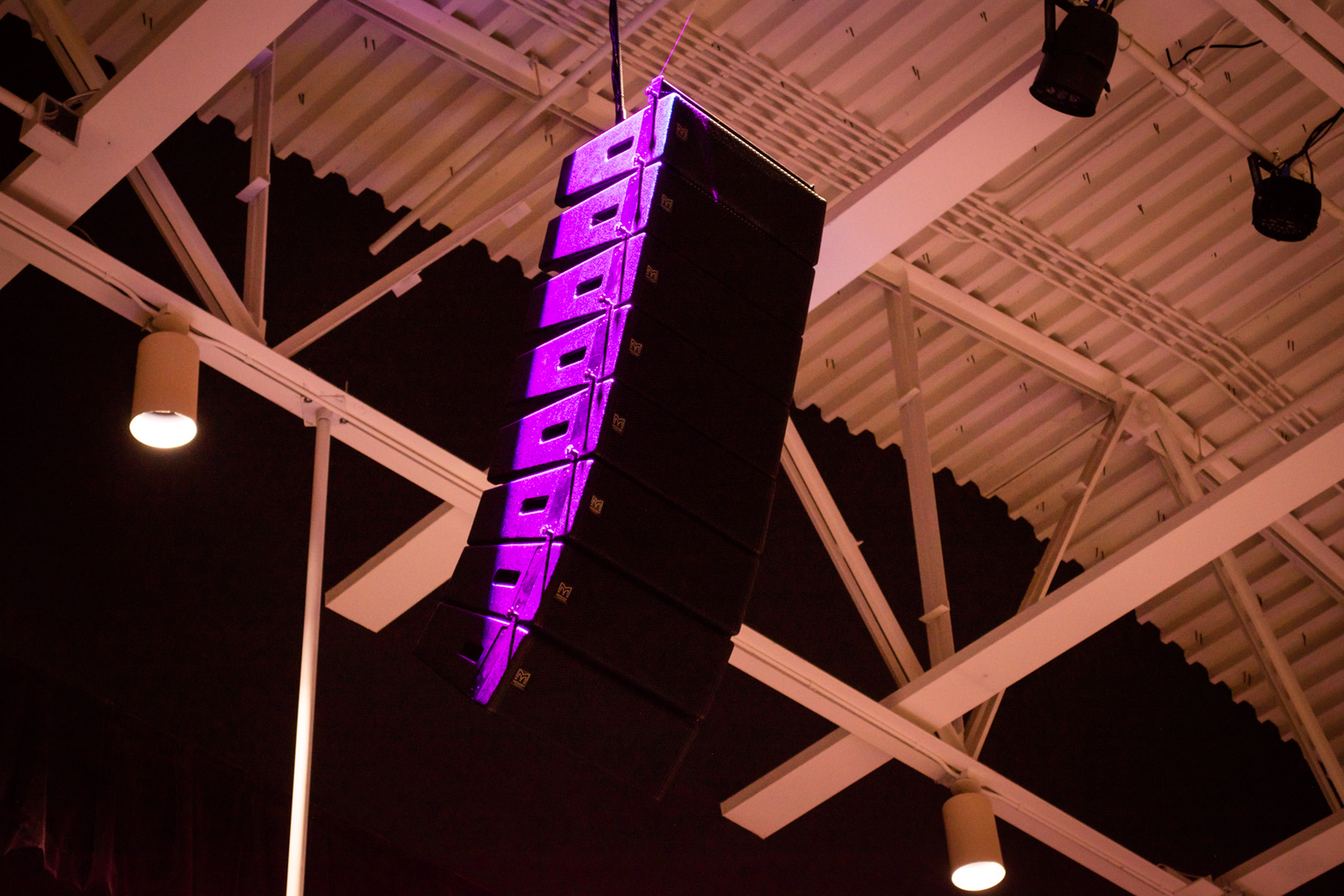
Well, that would help on communication and with running all the cabling.
Yeah, it was. And all that conduit was already in place. We had to clear some of it out and reuse some of it, but what also has beneficial is the guys are cross-trained in audio and lighting so that If someone has to jump up and run away, then the light guy can walk over to the audio and do anything he needs or the audio guy can walk over to the lighting and do anything else.
One of the big challenges in working volunteer crews is keeping everybody trained with people coming and going. That can be a significant problem when you’re trying to break new people in on live services.
Well, that’s another reason we went with the dLive with Allen & Heath is that desk is very, very user-friendly compared to some of the other digital consoles out there in that price point. It’s been a challenge to train them, to get them out of the analog world and into the digital world, but they’ve got a couple of really sharp guys there who have picked it up and are just running with it so I don’t get too many phone calls anymore on Sunday morning.
During the install, were you working while the services were in progress or were they diverted someplace else?
They have another worship facility, which was their original worship facility. It’s a gymatorium, as we call them– you know, part gym, part auditorium. So they had moved most of the services down to that auditorium and we had done the install over some of the holidays and spring break to not interrupt too many services.
They’re a fast-growing church. I think they not only outgrew their sound system but their whole building.
Yes they are, Bennett. They’re working on plans right now. Their future plans are to build a 2,500 to 2,700-seat sanctuary, which will probably end up being the second-largest church in the area.
And since they’re already planning this new facility, maybe you guys are even coming up with some ideas on what to do on that.
Yes. The church has picked an architectural firm, and we’re actually working with the architectural firm on the new sanctuary and making sure that everything that the church is going to need will be in place so when the final drawings are done all the AV will be also done. And once the building gets started we can jump in and go with it.


